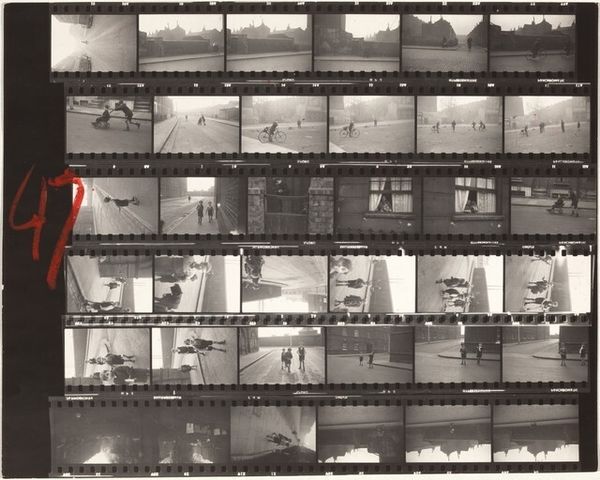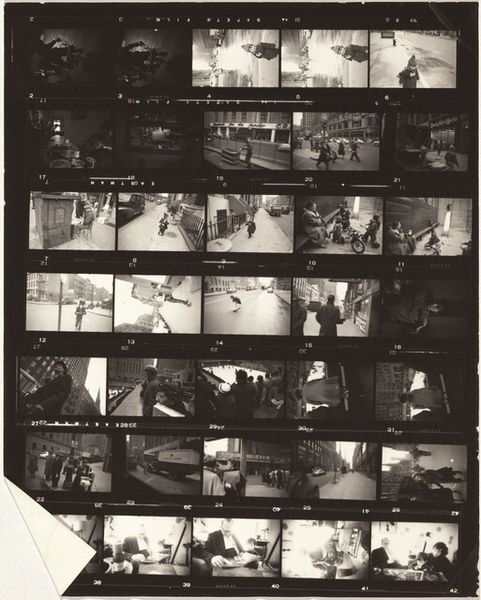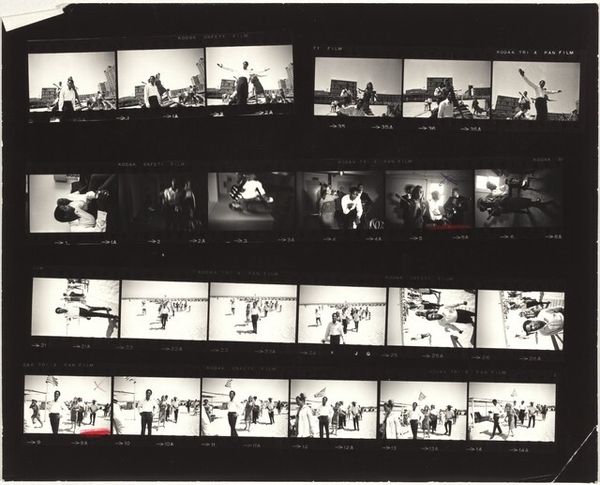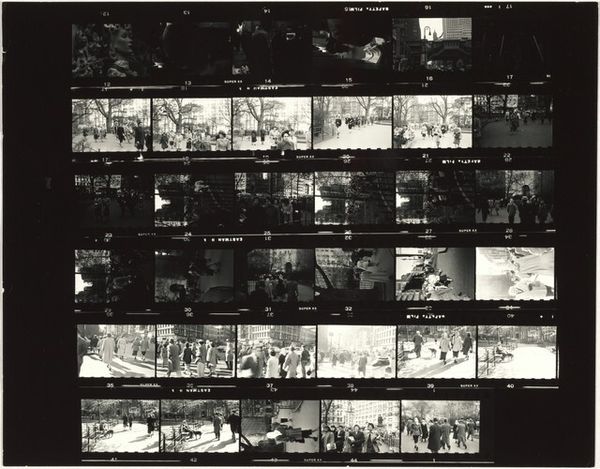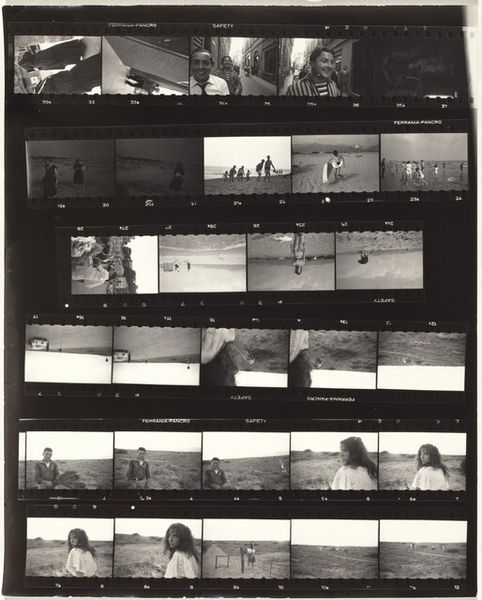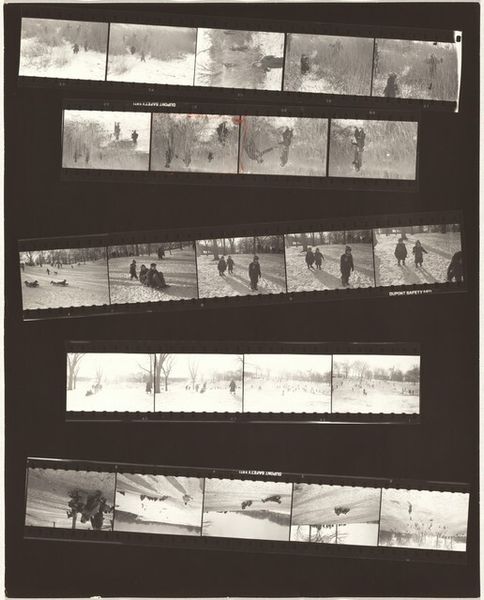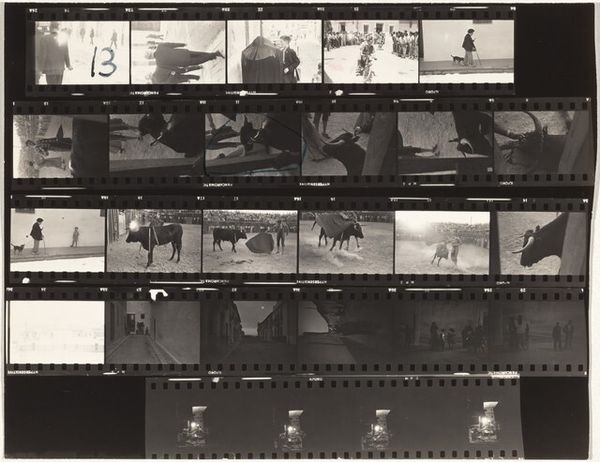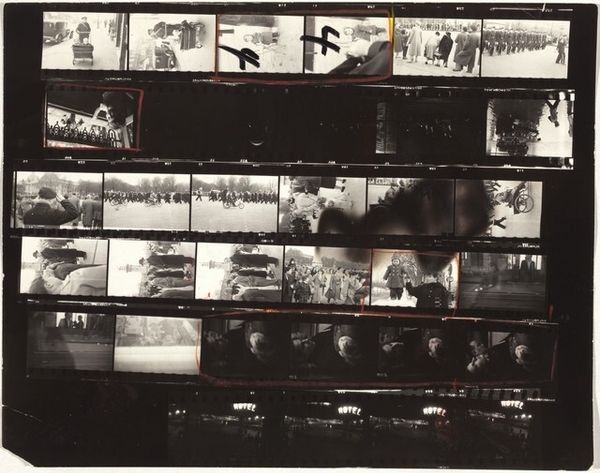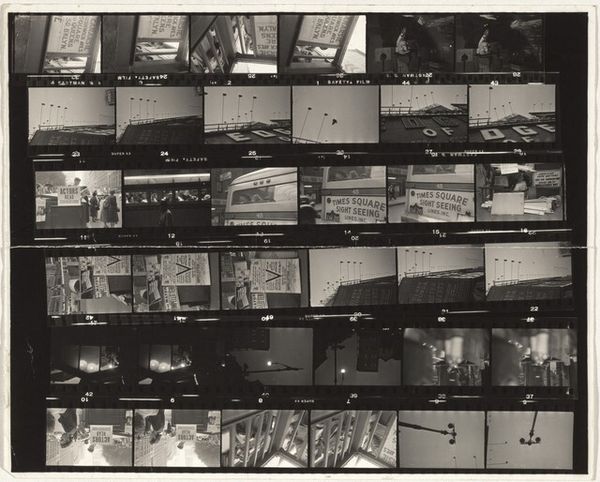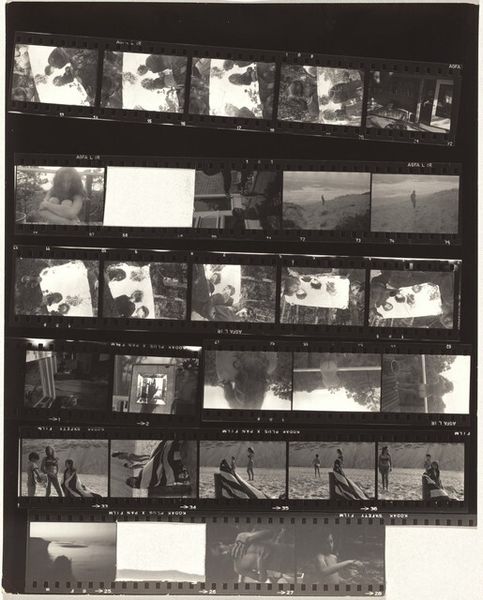
Dimensions: overall: 20.3 x 25.7 cm (8 x 10 1/8 in.)
Copyright: National Gallery of Art: CC0 1.0
Editor: This is "London 48," a gelatin-silver print contact sheet by Robert Frank, taken between 1952 and 1953. It's really striking, a whole sequence of images together like this. What jumps out at me is the street photography aspect, very raw and almost documentary style. What do you see in this piece? Curator: For me, the focus immediately goes to the material itself. It’s not just the captured image but also this artifact of the photographic process - the gelatin-silver print as a physical object and how it informs our understanding of postwar London. We’re seeing not just images, but *how* these images were produced. Think about the labor, the access to materials in that specific historical moment. Does the presentation, a contact sheet, change your reading compared to, say, a single enlarged print? Editor: Definitely. Seeing it like this makes me think about Frank's editing process, his choices and how they reflect a certain social reality he was capturing. It also brings up a point that photography as a 'craft' can provide an 'honest' account of the period when more conventional arts tend to shy away from showing certain conditions in plain sight. Is that an acceptable approach to appreciating Frank's work here? Curator: Exactly! It challenges the notion of the 'decisive moment', doesn't it? These multiple exposures, this feeling of contact—of direct, unmediated access—contributes to the artwork's 'realism'. This almost challenges traditional, romantic ideas of artmaking in the '50s. The seriality, too, connects it to manufacturing, an assembly line of images reflecting a post-war society in flux. Editor: So, by considering the materials and the processes, we can engage with the historical context in an accessible and more interesting way than the art object itself would typically let us, perhaps seeing the art's manufacturing circumstances gives art added dimensions beyond aesthetics and 'message.' Curator: Precisely. Frank isn’t just depicting London, he’s engaging with the means of representing it, reflecting the society's mode of material consumption and distribution of photographic technologies. It’s not only *what* we see, but *how* and *why* we see it this way that truly resonates.
Comments
No comments
Be the first to comment and join the conversation on the ultimate creative platform.
